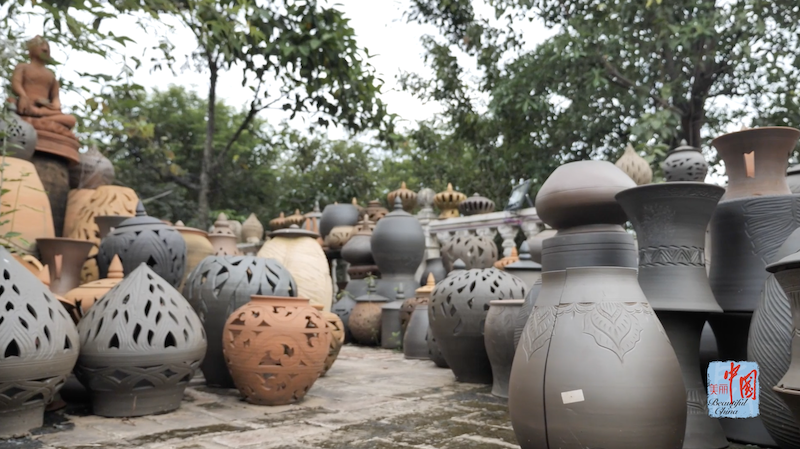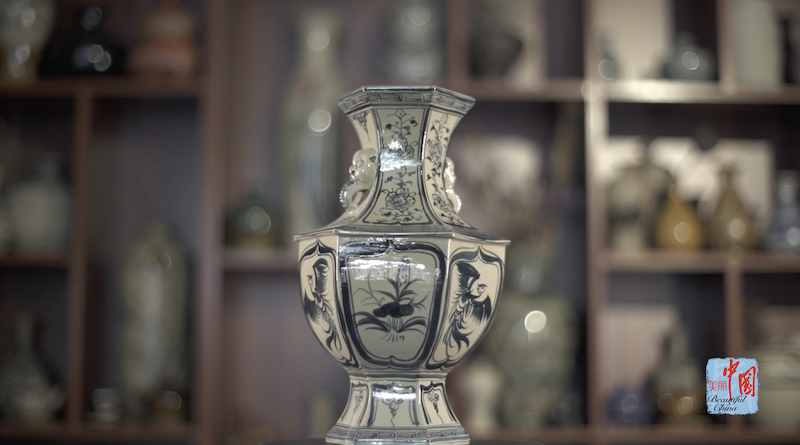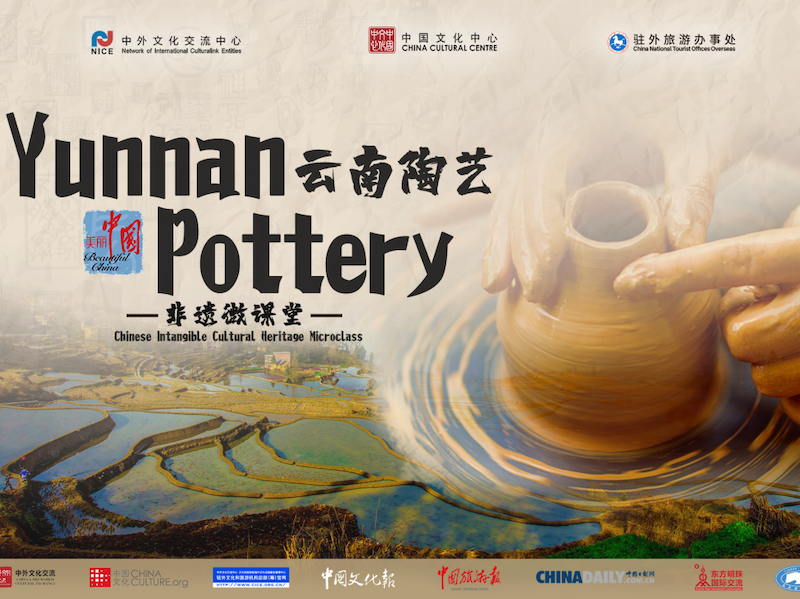Yunnan Province, located in the southwest of China, has a picturesque landscape and a long history of pottery making. It has a number of pottery making skills which belong to national intangible cultural heritage. Jianshui Purple-Pottery which is along the Red River, Nixi Black-Pottery in Shangri-La, Dai nationality Slow-wheel Pottery in Xishuangbanna, Blue and white pottery in Yuxi, Jinsha Pottery in old town of Lijiang... The rich natural resources and the colorful multi-ethnic culture are well-integrated to breed splendid traditional handicrafts, which have been inherited for thousands of years and unfading. Clay is the gift of nature, condenses people’s respect and reverence for nature of all ages. When gradually taking shape in the hands of craftsmen, the clay seems to have the human nature with the magic of art.
位于中国西南边陲的云南省风景如画,制陶历史悠久,拥有多项制陶技艺国家级非物质文化遗产。红河畔的建水紫陶、香格里拉的尼西黑陶、西双版纳的傣族慢轮陶、玉溪青花、丽江古城的金沙陶……丰厚的自然资源与多彩的民族文化融合孕育出灿烂的传统手工技艺,传承千年,历久弥新。
水火土木炼艺,书香笔墨入魂。泥土承载着大自然的恩赐,凝聚着古往今来人们对自然的尊重与敬畏,在匠人手中逐渐成型。经过别具匠心的审美和琢磨,泥土就有了人性,有了艺术的魔法。
Jianshui Purple Pottery
China has a long history of pottery and porcelain making and its reputation for the craft has gained it its name. The Jianshui Purple Pottery is unique for its firing technique and decoration of calligraphy and painting. It is also an outstanding example of Chinese pottery.More than a work of art, the purple pottery also reflects a kind of attitude towards life.


Nixi Black Pottery
To adapt to the snowy plateau environment, Tibetan people created Nixi Black Pottery, a product of Huotang Culture. Black-pottery pots are used for simmering tea, black-pottery saucepans for stew, and black-pottery stoves for heating by charcoal burning. Food cooked in this kind of black pottery has an authentic taste of earth that modern cookware fails to provide, and has been part of the everyday life of Nixi people from generation to generation.
Slow-wheel Pottery Manufacturing
The slow-wheel pottery manufacturing of the Dai ethnic minority has a long history. In Mandou Village, Jinghong City, Xishuangbanna Dai Autonomous Prefecture, this traditional skill has been reserved so far. Clay, fire, and water are used in pottery making. After several ups and downs, this craft, instead of dying out, exhibits unique charm of returning to original simplicity.


Yuxi Qinghua Porcelain
Yuxi Qinghua kilns were born in late Yuan (1271-1368) and early Ming Dynasty (1368-1644), representing the top notch of Yunnan ceramic firing and manufacturing skills in history. The Qinghua porcelain thus made is featured by antique and plain shape, simple and vivid decoration, and a wide range of texts and subjects. These distinct folk features make it in a league of its own in the Chinese ceramic industry.
Lijiang Jinsha Pottery
On the southest of Qinghai-Tibet Plateau is a famous tourist and cultural city, Lijiang. Lijiang Jinsha Pottery, originated from the local Naxi Dongba culture, gradually developed its unique style.



